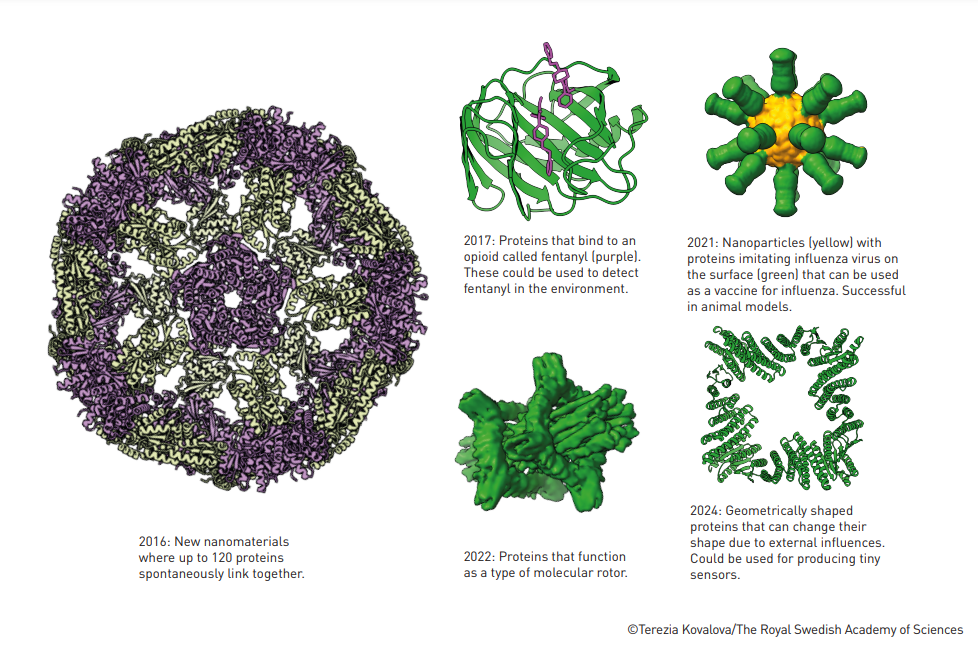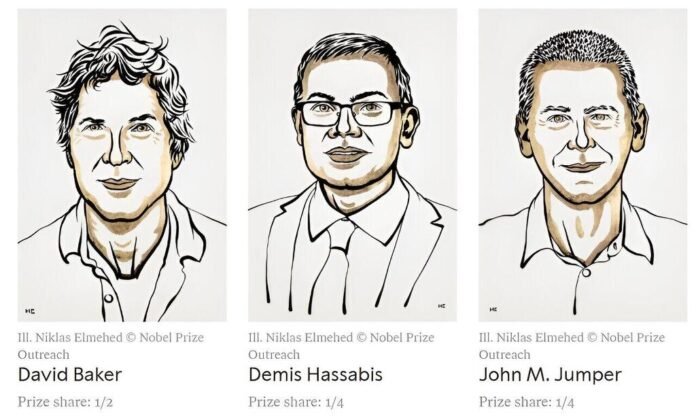Earlier this week, the Nobel Prize in Chemistry was awarded to a team of researchers who achieved one of the most groundbreaking achievements in modern science – building new proteins and solving the protein folding problem using artificial intelligence (AI). This milestone was made possible through the efforts of David Baker, John Jumper and Demis Hassabis. It revolutionised our understanding and interaction with the building blocks of life and has become a turning point in computational biology. This success story has solved a decades-long puzzle and left behind numerous prospects in its wake.
The Protein Folding Problem: A Molecular Puzzle

Proteins are fundamental molecules that perform essential functions in the body. They can be simply defined as the chains of amino acids. These chains fold into specific three-dimensional shapes that determine the protein functionality. However, predicting the exact folding process of a protein based on its amino acid sequence has been a challenging task. This challenge, known as the ‘protein folding problem’, was tackled using X-ray crystallography and cryo-electron microscopy. These techniques are time-consuming, expensive, and simply could not accommodate the vast quantities of existing proteins across species.
Finally in 2020, AlphaFold2, an artificial intelligence system was developed by Google DeepMind. This cutting-edge platform is capable of predicting protein structures with extraordinary precision. AlphaFold cracked the protein folding code, facilitating the prediction and generation of protein models in a matter of hours compared to the years spent in painstaking lab work before this technology. The predictions of AlphaFold are so accurate that they are now used in fields ranging from evolutionary biology to drug development.
What Does it Mean for Us?
Many diseases, ranging from cancer to Alzheimer’s, are linked to protein misfolds. The prediction of protein structures quickly and accurately using AlphaFold enables scientists to design drugs that target specific proteins, potentially reversing these misfolds. AlphaFold has already been used to identify protein targets for diseases like malaria, and COVID-19.. Beyond medicine, the protein folding predictions can deepen our understanding of molecular mechanisms in the body, thereby, establishing new ways to study biochemical functions of proteins. AlphaFold also drives innovations in drug discovery, agriculture, and materials science. By designing synthetic proteins with specific structures, scientists could develop new biomaterials, enzymes for breakdown of hazardous waste, and even sustainable energy solutions. AlphaFold has saved us years of lab work and resources. This quick and reliable tool is nothing short of a quantum leap in the field of biology.
However, the usage of Al in biology is still in its primary stages. Future advancements may include AI platforms to predict protein interactions, protein folding in various environments like different pH levels, the presence of membranes, diseased conditions, or the folding of entire protein complexes. We might also see AI-based simulations of how proteins behave in real-time, offering novel insights into molecular biology. This could pave the way for personalised medicine, based on the protein behaviour in an individual’s system. The possibilities are endless and certainly achievable, as demonstrated by the development of AlphaFold by John Jumper and Demis Hassabis and the computational designing of novel proteins by David Baker.
This year’s Nobel Prize in Chemistry symbolises a monumental shift in how AI approaches significant challenges in biology. The unravelling of the protein folding puzzle with the help of AI marks the dawn of a new era in both computational biology and medicine. This success will transform our lives for the better, steering rapid advancements in domains such as agriculture, biotechnology and material sciences in the coming years. Humanity has embarked on a transformative journey of unravelling the tapestry of life – creating new patterns and putting them back together when necessary.

Deeksha, is a Biochemist and an aspiring neuroscientist. Her research interest lies at the intersection of molecular neuroscience and drug discovery.


